On the last Sunday of February, the midpoint between my first and second dose of Pfizer, I call up my best friend, Elmer, who I hadn’t seen in person since the previous summer. I ask if he wants to meet up for a socially-distant hangout.
“Meet me at the Manila District,” he tells me. “I’m going there to buy plants.”
“What’s the Manila District?” I ask, baffled-slash-embarrassed. I’d never heard of it.
“It’s an outdoor market with Filipino vendors,” he explains.
Elmer texts me the address. It’s on 7th Street about a mile and a half east of Little Tokyo and a few blocks west of the Los Angeles River. I recognize the address. The previous April, a month into lockdown, my partner Joe and I picked up fried chicken sandwiches and ube cookies from a Lokels Only event in Downtown Los Angeles. Aside from a handful of people waiting for their food, I didn’t remember much else happening there. I search for Manila District’s Instagram page; its bio describes it as a “Curated Hub for Cultivating Filipino-led micro-commerce.”
Thirty minutes later, I arrive at the Manila District. Unlike Historic Filipinotown, it’s not an official city designation. It’s an empty parking lot sandwiched between buildings. At the entrance, I’m greeted by a sign that reads “FilLed Market,” which stands for “Filipino-Led Market.” Along the perimeter of the parking lot are a mishmash of Filipino vendors in their pop-up tents, selling everything from desserts to lunch plates, gift items, clothing and house plants.
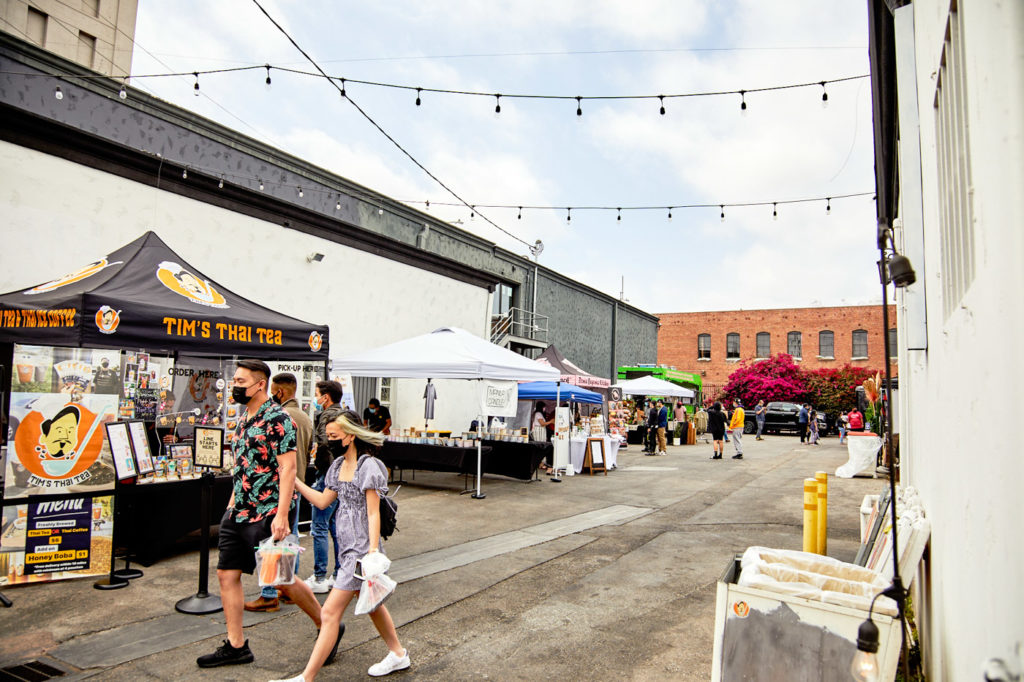
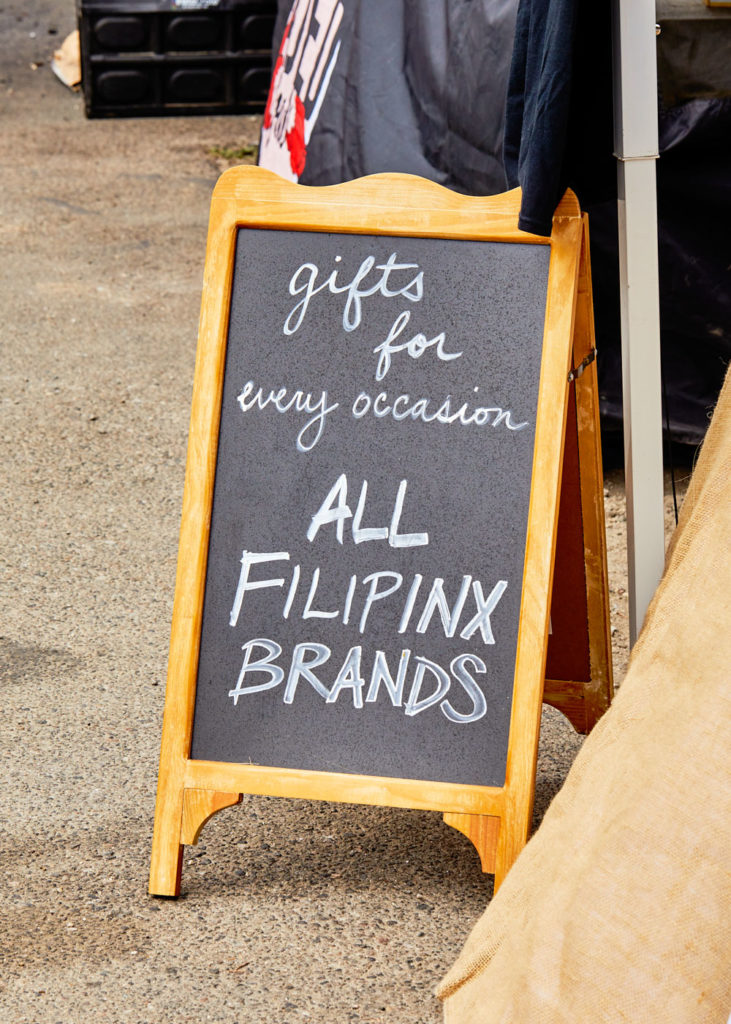
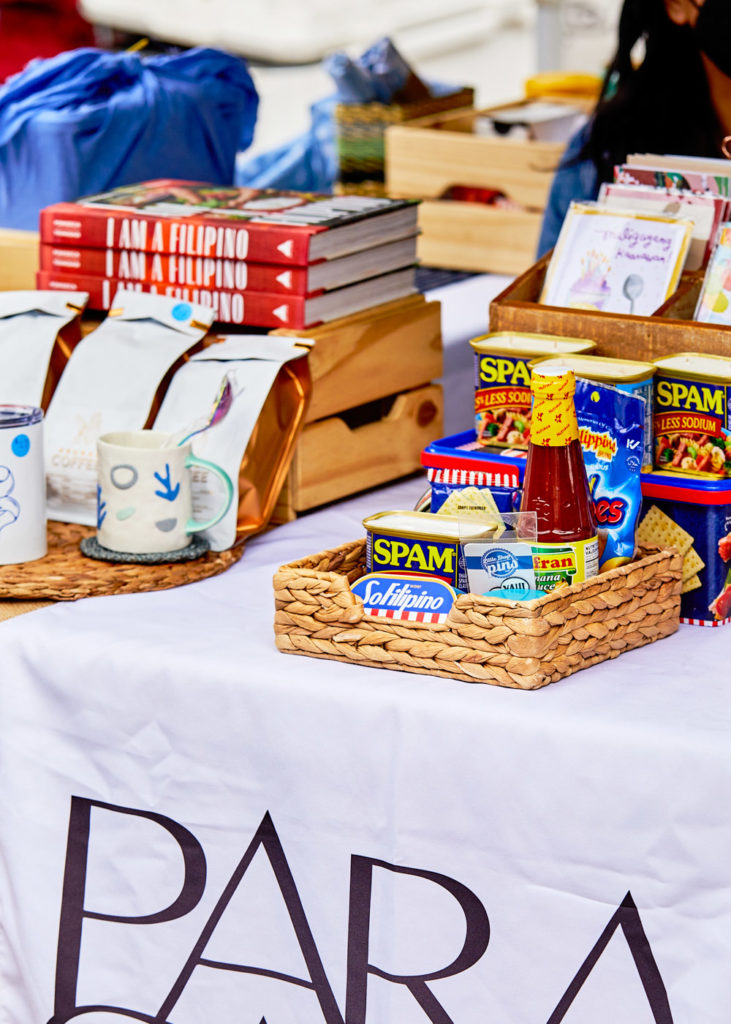
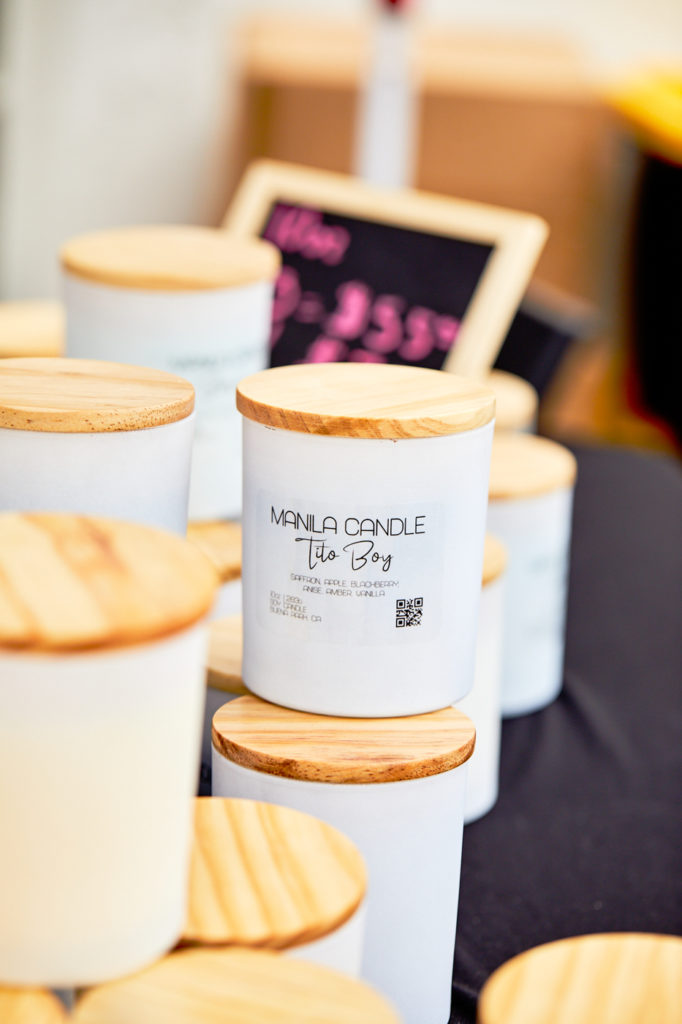
The crowd is light; aside from the vendors, only about 30 customers are there, adequately spaced across the large parking lot. I’m excited too. I realize it’s been a year since I’ve been surrounded by Filipino food, culture and people, and I’m itching to socialize. Elmer is running an hour late, which gives me ample opportunity to chat with vendors, who are busy, but not flooded with customers.
The first vendor I check out is Manila Candle, which is owned by Vernon Rodriguez, whose full-time job is as a psychiatric nurse. On the display table are different-colored candles, each bearing the name of a unique scent. Some are named after popular tourist spots in the Philippines (like Tagaytay and Palawan), others are named for family members (Tita Baby, Tito Boy), and the bestseller is named after the national flower of the Philippines, sampaguita (jasmine, in English). As I’m perusing the merchandise, the Filipina woman standing next to me picks up the sampaguita candle and takes a whiff.
“It smells like back home,” she tells her friend, smiling. Her eyes are closed, as if imagining herself in another place — another time, perhaps. By “home,” she means the Philippines. You can tell just by the way she says it. The second she walks away, I pick up the candle so I can feel what she was feeling.
I breathe in the sampaguita, and for a moment, I forget about the pandemic.
How It Started
Over Zoom, longtime friends Lauren Delgado and Rayson Esquejo, both second-generation Filipino Americans, tell me they launched the Manila District in July of 2020 in response to the pandemic. In the mid- to late-2010s, Filipino cuisine was having its long overdue moment on a national level. Filipino American chefs and restaurateurs like Angela Dimayuga, Nicole Ponseca and Tom Cunanan were garnering James Beard nominations and awards. Filipino chefs like Yana Gilbuena, Chad and Chase Valencia, and Isa Fabro were being featured regularly in The New York Times, Los Angeles Times, The Washington Post, Bon Appétit, Eater and on the Food Network.
But with the coronavirus lockdown came the sudden closure of restaurants and food events, like Smorgasburg and 626 Night Market, where many up-and-coming Filipino Americans chefs, including Lobsterdamus’s Johnny Angeles and Francis Reyes, had established their pop-ups. The momentum of the Filipino food movement came to a screeching halt, and Delgado and Esquejo felt they needed to do something. But they weren’t sure how, at first.
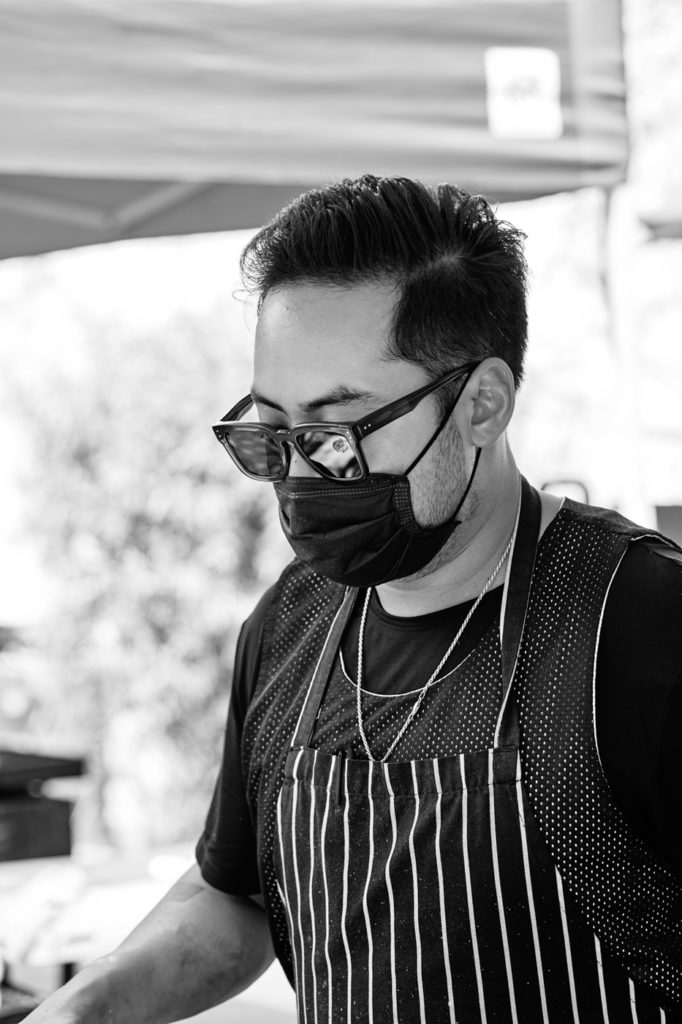

“It didn’t start off as the Manila District, and there was no FilLed Market,” Delgado explains. Delgado is the vice president of the Santa Maria Group (SMG), a government relations and business solutions firm, which operates in one of the buildings surrounding the lot. SMG’s founder and president, James Santa Maria (the third partner behind the Manila District), co-owns the building, which happened to have a recently vacated commercial kitchen available. Delgado and Santa Maria had the health permit, and they offered the kitchen — and parking lot — to Filipino culinary entrepreneurs who in the early months of the pandemic had practically nowhere to set up shop. Angeles and Reyes (owners of Lobsterdamus and Mano Po) were the first vendors in what eventually became the FilLed Market at the Manila District.
“[Angeles and Reyes] came to James and myself and said, ‘All the open-air markets are closed right now. We need to stay afloat. We still need to continue what we’re doing — maintain our brand presence, sell our product,’’’ says Delgado. “These guys love what they do. So for me and James, it just seemed natural. Easy. Done. We have a health permit. And for a few weeks, it was just them popping up every Sunday.”
A protégé of Roy Choi, Angeles launched Lobsterdamus with Reyes, his cousin, in 2014, and it was an instant hit at the O.C. and 626 Night Markets. When Smorgasburg arrived in Los Angeles in 2016, the pop-up became the cousins’ full-time jobs. They scaled up and began popping up at Smorgasburg New York and various food fairs in San Francisco. Inspired by a trip to the Philippines in late 2019, they launched Mano Po in January 2020. Whereas Lobsterdamus offered lobster sandwiches and lobster garlic noodles, Mano Po featured quintessential Filipino dishes. Two of their bestsellers, which are listed on a menu on their Instagram account, include the chicken inasal, “a Southern Philippine-style grilled chicken marinated with coconut vinegar, lemongrass and calamansi,” and their longganisa lumpia, “a Filipino-style sweet sausage wrapped in rice paper and deep fried.”
But less than two months after opening Mano Po, the pandemic hit. At a typical Los Angeles Smorgasburg, Angeles and Reyes said they would rack up upward of 700 orders. In the early days of the pandemic, Reyes harnessed social media and created a robust ordering platform on their website. Still, they were lucky if they received 50 orders in a day.


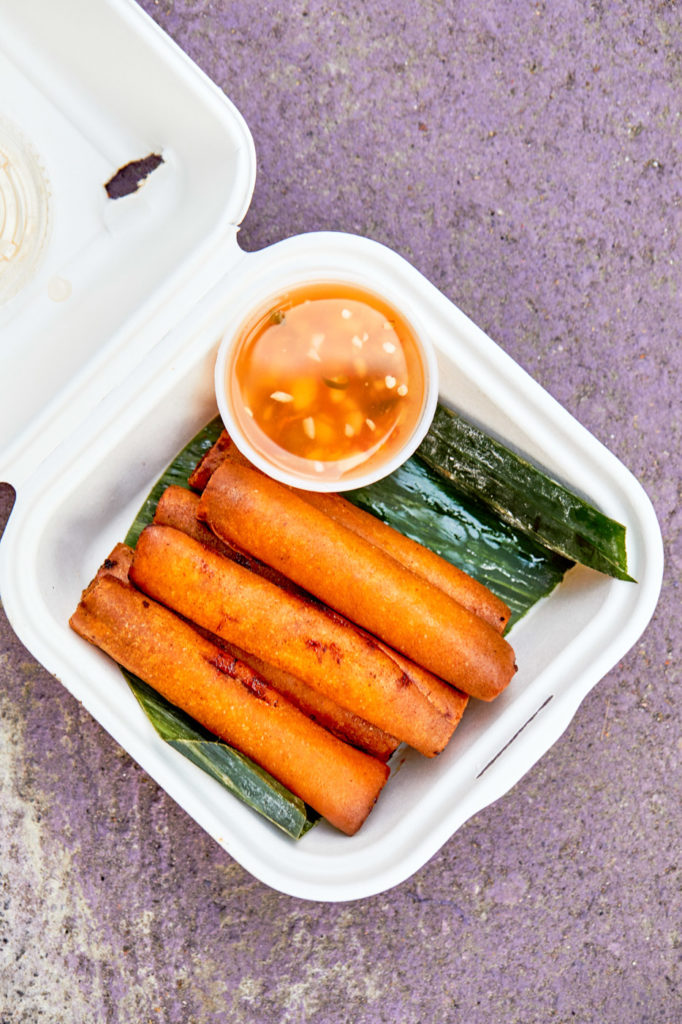

For Angeles and Reyes, FilLed Market on Sundays offered a rhythm to an otherwise unpredictable year. While they’re not reaching their pre-pandemic numbers, their sales have increased. Their presence has been a catalyst for other Filipino pop-ups to join FilLed Market as well. Jeff Mejia of Taste of the Pacific offers your choice of barbecue chicken skewers, pork skewers, or beef short-rib served over rice and a scoop of macaroni salad. Chef Jae of Keyks specializes in “artisanal Twinkies,” many of which were inspired by quintessential Filipino dessert flavors ube, pandan coconut and jackfruit. Jennifer and Carlo Avanceña of Calajo Catering developed a plethora of ube offerings, from cheesecake bars, cakesicles, donuts and crinkle cookies.
Many of the new vendors were brought in by Esquejo, an entrepreneur and food blogger, who had partnered with Delgado a few years prior on a massive Filipino food festival Eat. Play. Move. (which, in its first year, hosted 25,000 attendees). It was Esquejo — the co-founder and head of marketing of Filuency, the organization behind Eat. Play. Move. and the Manila District — who pitched the idea of Saturday car hops.
“A car hop is where [cars] come in, they park six feet apart, and we serve them food from one of these [Filipino] vendors who was struggling because they’re not open,” Esquejo explains. “It would be very small, like ten cars.” Santa Maria purchased plants to beautify the ambiance and set up small tables in each parking spot. Esquejo and Delgado designed personalized name plates with a Google phone number in case attendees want to order more food — the car hop experience is contactless, yet intimate. With the car hops and FilLed Market, the Manila District began to crystallize.
As more and more vendors became interested, one rule was established. “We don’t need you to be Filipino if you want to be a vendor, but we do need you to have a product or food that highlights a Filipino flavor or parts of the Filipino culture,” Delgado says. “At the end of the day, our goal is to incubate these small businesses to encourage the Filipino entrepreneurial spirit, but also to enlighten people, especially in L.A., to the great facts of Filipino culture.”
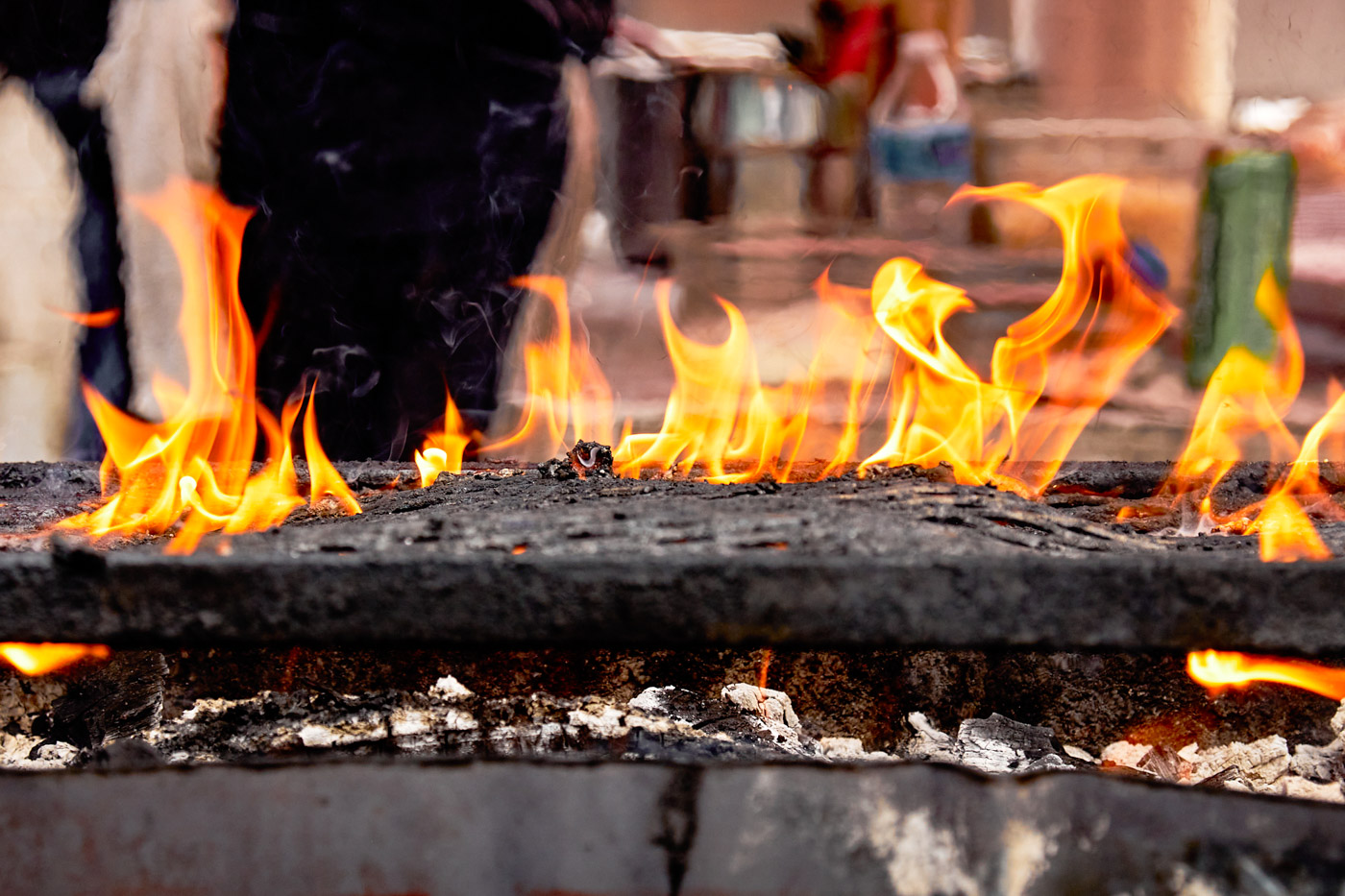
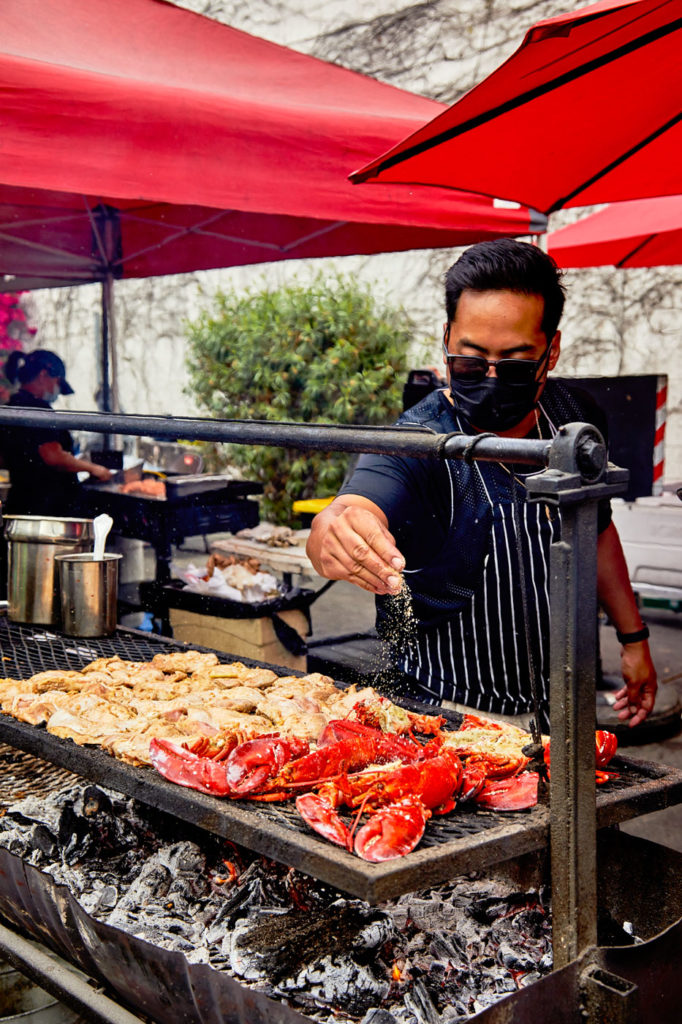
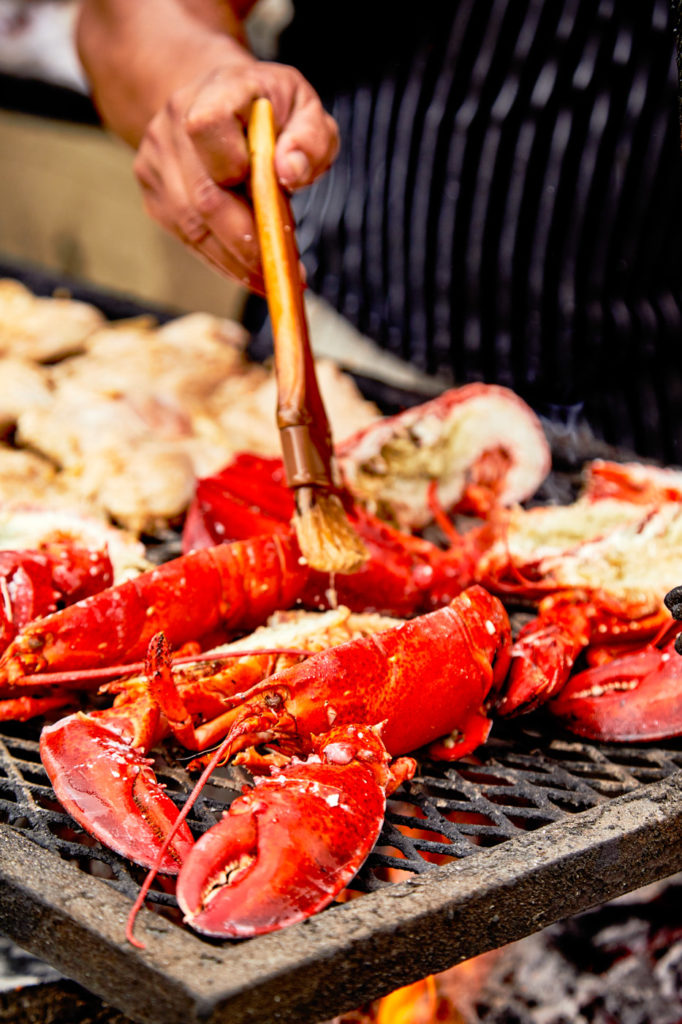
How It’s Going
While FilLed Market initially began as a place for Filipino American chefs to pop up, other vendors found their way to the Manila District by way of social media and word of mouth. Unlike their culinary counterparts, many of the non-food vendors established themselves at the start of pandemic. In November of 2020, sisters Michele and Anna-Marie Josue launched Para Sa’Yo (“For you,” in English), a company that curates gift boxes made of items made by Filipino American artists. Over Zoom, I spoke with Michele Josue about Para Sa’Yo’s origin story.
“It was truly born out of the pandemic,” Josue says, who also happens to be an Emmy-winning documentarian. Gift items in Para Sa’Yo’s sets includes hand-woven face masks, soaps, cookbooks, mugs, stickers, pins and of course, Filipino-inspired snacks and sauces — dried mangoes, mixed nuts, butter crackers, and banana ketchup. Each set feels like a personalized pasalubong, or souvenir, brought by a loved one coming back from the Philippines. For example, for one of the box-sets, the sisters repurpose the toolbox-sized plastic SkyFlakes Crackers box, which Josue says immediately triggers nostalgia for Filipinos who’ve been missing home. One of their bestselling items is the Spam candle, which is the ultimate conversation starter at FilLed Market.
“Everybody who comes by [says] they stopped by because they see the Spam candles,” Josue says. “Then they go, ‘Oh my God, does it smell like Spam?” (They don’t. They’re mango papaya-scented). For Josue, who grew up in Maryland and remembers white classmates bullying her for bringing Filipino food to lunch, Para Sa’Yo has been a way for her to reclaim and celebrate the culture she was made to feel shame for. “Hopefully we’re making a difference and empowering a Filipino point of view,” she says.
That Filipino American perspective was central to how Rodriguez has conceptualized Manila Candle. As he explains the concept behind each scent, it feels like I’m being transported to quintessential moments in my Filipino American coming of age. The Tita Baby candle scent is inspired by Filipino aunts who love flowery perfumes. The Tito Boy candle evokes memories of the strong musky eau de toilette worn by Filipino uncles. The Jun Jun (Filipino nickname for “Junior”) reminds you of the younger teenage cousin who proudly wears inexpensive cologne. Many of the customers he interacts with at FilLed Market echo that his candles feel like a walk down memory lane.
“I see the customers coming in, smelling the candles, reminiscing about the past. It’s nostalgic to them,” Rodriguez says. “Someone said to me, ‘My lola [grandmother] has that sampaguita flower. She used to buy me sampaguita at church.’ That’s the whole story of Manila Candle. It’s just bringing a memory.”
Nostalgia plays a key role in how Angeles and Reyes grow Mano Po. Perfecting new recipes for crispy pata (deep-fried pork leg) and kare-kare (oxtail stewed in peanut sauce) has helped them forget about the moment we’re living in.
“Sometimes you forget, when you’re cooking Filipino food. You start having those scents from when you grew up in your lola’s house, and she would make certain food,” Angeles says. “It’s almost like you’re reliving these great memories that you had.”
___
I’m halfway through my lobster garlic noodles from Lobsterdamus when Elmer finally arrives. He orders the chicken inasal from Mano Po. We post up on some benches under one of the stairwells. Although we can’t share food, we spend the next few hours sharing memories — the misadventures of our decade-long friendship that became the building blocks for family. I laugh harder than I have since the pandemic began. After a year of Filipino nurses disproportionately dying and Filipinos being targets of anti-Asian violence, I had forgotten what this kind of joy feels like. But for now, I have my Filipino friend and my Filipino food in the Manila District. We’re making memories and feeling carefree.





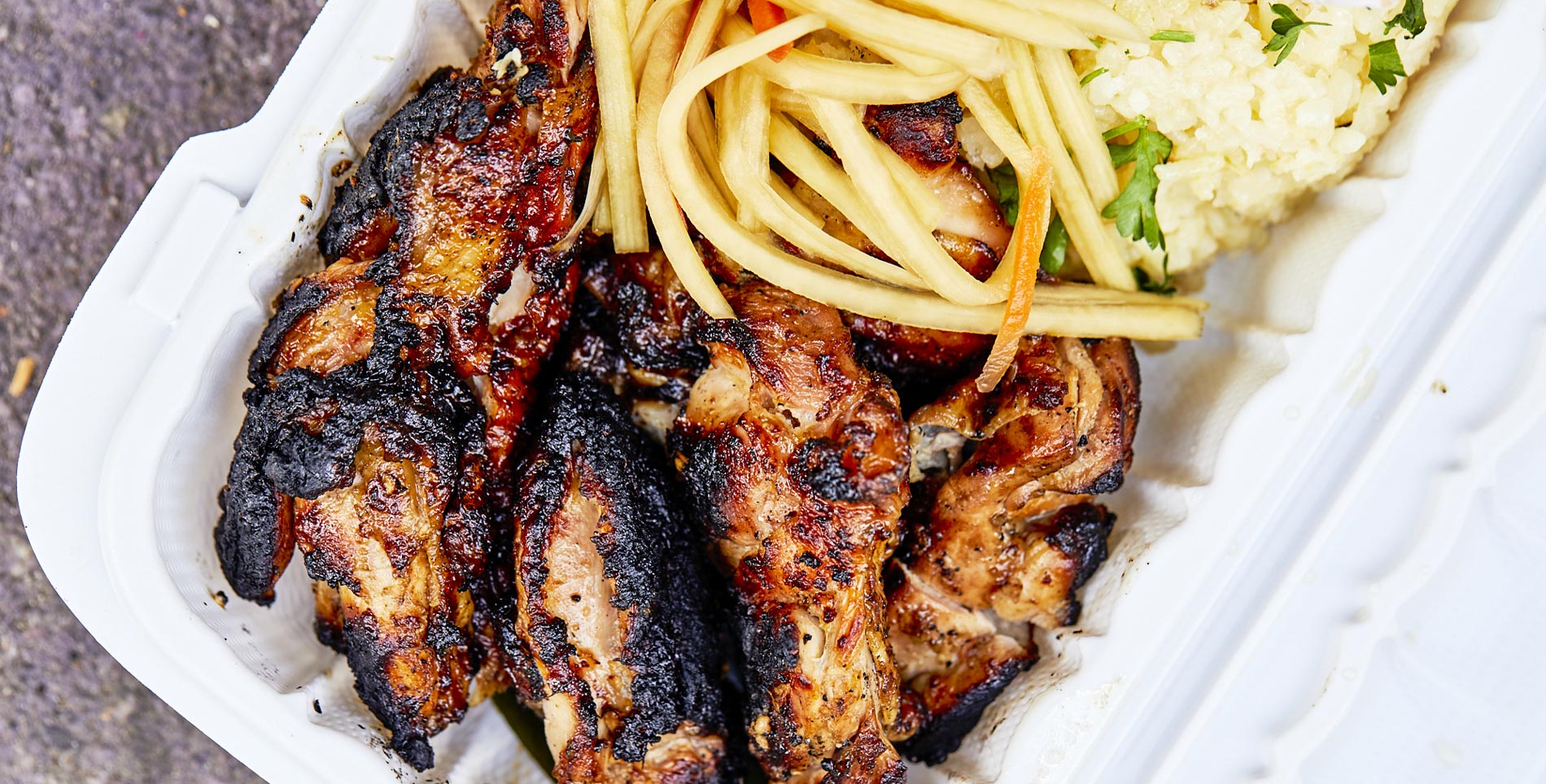

Our comments section is for members only.
Join today to gain exclusive access.